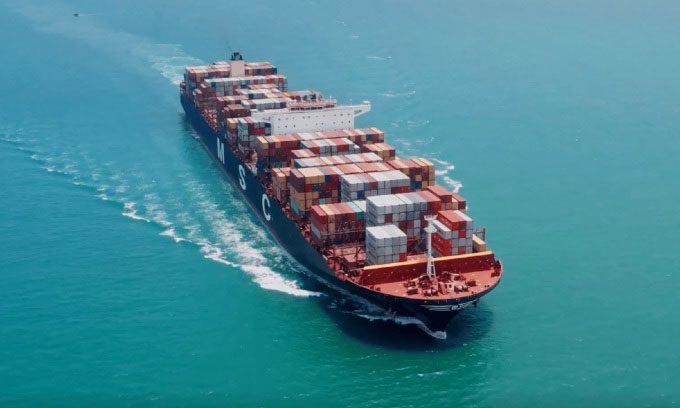During a two-month journey at sea, the system developed by the UK startup Seabound captured 78% of carbon emissions released from a secondary engine of the container ship.
Seabound, a climate technology startup based in London, conducted a trial of their carbon capture system to recover a portion of the carbon emissions during the sea voyage of the container ship Sounion Trader, according to a report by IFL Science on February 20. Over the two-month journey from Turkey to the Persian Gulf, the system successfully captured 78% of carbon emissions and 90% of sulfur dioxide emissions from one of the ship’s auxiliary engines.

The prototype of Seabound’s carbon capture system was tested during the two-month journey of a medium-sized container ship. (Image: Seabound).
“Although we are still in the early stages, the first pilot project has demonstrated that our technology is effective and can address a significant, complex issue. This breakthrough shows that the maritime industry does not need to wait for new fuels or solutions to reduce emissions in the future. We can start capturing carbon from existing ships right now,” said Alisha Fredriksson, CEO and co-founder of Seabound.
The system works by connecting a capture device to the exhaust pipe of the engine. The emitted gases combine with calcium oxide (or quicklime) which reacts with CO2 to produce calcium carbonate (or limestone). The remaining “clean” exhaust gases without CO2 are released into the atmosphere. The solid limestone is then brought back to port to be sold as construction material or separated back into calcium oxide (which can continue to help capture carbon) and CO2 (which can be sequestered underground).
Following the successful trial, Seabound aims to develop a “larger and better” system capable of capturing up to 95% of CO2, with plans to launch it on the market next year.
Approximately 90% of international goods are transported via maritime shipping. As the demand for international trade increases, the volume of goods transported by sea is expected to triple by 2050.
However, the maritime industry emits a large amount of CO2 and other greenhouse gases. Shipping vessels account for 3.1% of global carbon emissions each year—more than Germany, the sixth-largest emitter in the world. Therefore, before achieving the goal of phasing out fossil fuels, carbon capture technologies like those of Seabound could provide a practical solution for environmental protection.



















































